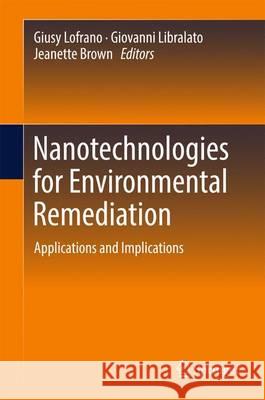Nanotechnologies for Environmental Remediation: Applications and Implications » książka
topmenu
Nanotechnologies for Environmental Remediation: Applications and Implications
ISBN-13: 9783319531618 / Angielski / Twarda / 2017 / 325 str.
Nanotechnologies for Environmental Remediation: Applications and Implications
ISBN-13: 9783319531618 / Angielski / Twarda / 2017 / 325 str.
cena 644,07
(netto: 613,40 VAT: 5%)
Najniższa cena z 30 dni: 616,85
(netto: 613,40 VAT: 5%)
Najniższa cena z 30 dni: 616,85
Termin realizacji zamówienia:
ok. 22 dni roboczych
Bez gwarancji dostawy przed świętami
ok. 22 dni roboczych
Bez gwarancji dostawy przed świętami
Darmowa dostawa!
Kategorie:
Kategorie BISAC:
Wydawca:
Springer
Język:
Angielski
ISBN-13:
9783319531618
Rok wydania:
2017
Wydanie:
2017
Ilość stron:
325
Waga:
0.68 kg
Wymiary:
24.36 x 16.61 x 2.49
Oprawa:
Twarda
Wolumenów:
01











